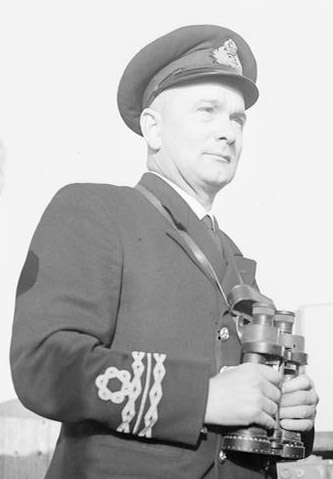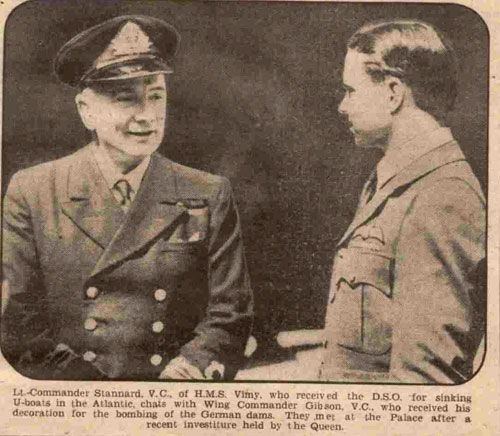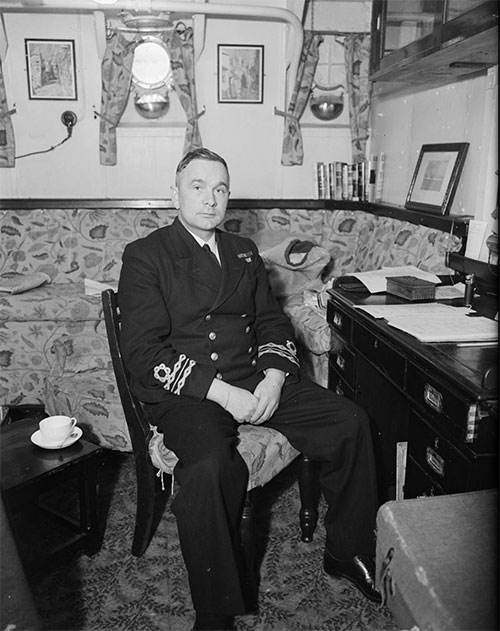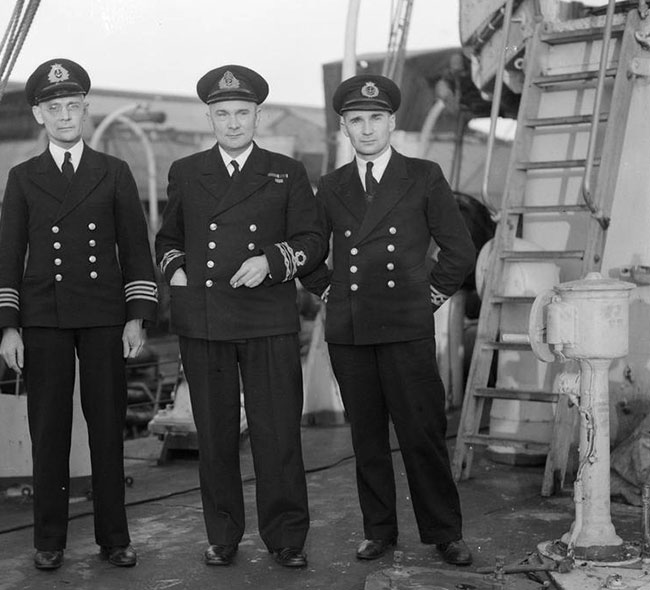
 HMS VIMY
HMS VIMY
 The
Norway Campaign was not one of the successes of the War and the Navy
was called in to evacuate troops from several points, among which was
Namsos, about 100 miles north of Trondheim, where troops had been
landed on 14 April 1940. Amongst the ships sent there were the 15th and
16th Anti-Submarine Striking Forces.
The
Norway Campaign was not one of the successes of the War and the Navy
was called in to evacuate troops from several points, among which was
Namsos, about 100 miles north of Trondheim, where troops had been
landed on 14 April 1940. Amongst the ships sent there were the 15th and
16th Anti-Submarine Striking Forces. Lieut Cdr R B Stannard, VC, RNR, in his cabin on board HMS Vimy
On returning to Liverpool after sinking U-187 on 4 February 1943 IWM A 15018 |
 Lieut Cdr Stannard, VC, RNR, on HMS Vimy at Liverpool with his two brothers, both in the Merchant Navy
Left to right: Chief Engineer Noel Stannard, Lieut Cdr R B Stannard, VC, RNR, and first officer John Stannard Photographed by Lt H.W. Tomlin (IWM A 15025) |